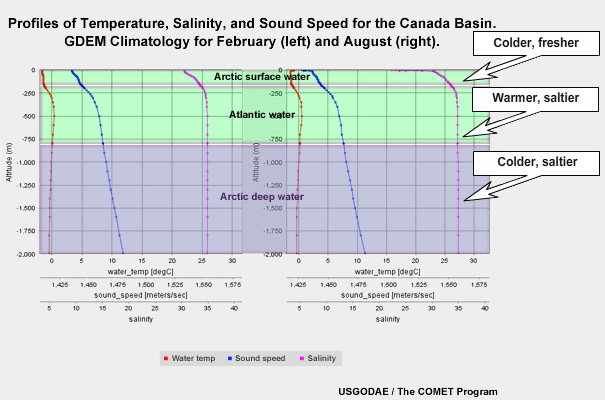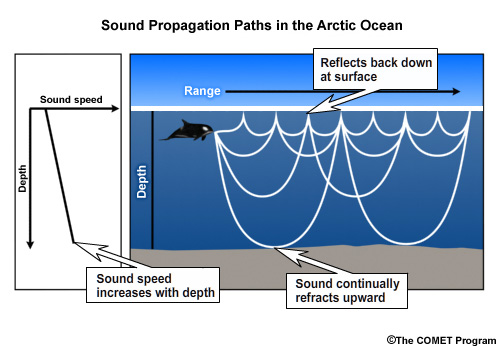OceanographyWater Masses

The geometry of the basin, combined with the inflow of Atlantic water, determines the profile of the water column. Arctic surface water (0-200 m) is relatively fresh due to runoff from many large rivers draining Siberia and Northern Canada. Below this fresh layer is a layer of Atlantic water (200-800 m), which is both warmer and saltier. Below the Atlantic water is Arctic deep water, as cold as the surface water and as salty as the Atlantic water. This has pooled in the deep basin.

Operationally, this vertical profile of the water column has little effect on surface vessels, but may affect submarine operations. Unlike most of the world ocean, sound speed increases with depth from the surface to the seafloor. Sound continually refracts upward toward slower speeds at the surface, where it reflects back down. As a result, sound travels a long way in the Arctic with few “blind spots.”